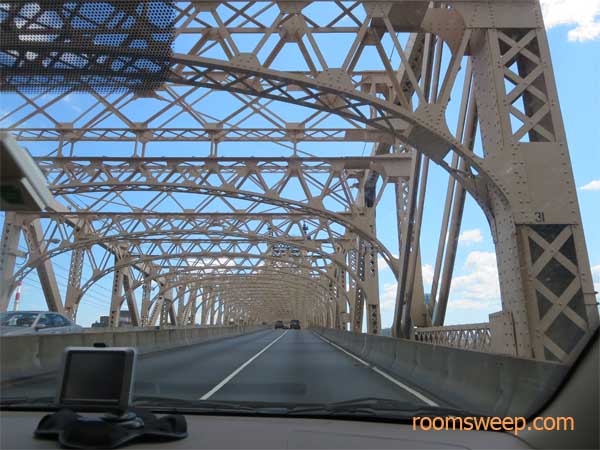Print Directions
Whether it’s a navigation system built into the car, a portable GPS device from Garmin, or a map on a smartphone, turn-by-turn directions are readily available. A drawback with GPS devices is the loss of a signal. It is possible that while driving through a remote area there could be a loss of signal from the satellite, leaving you without turn-by-turn directions until the signal returns. Depending on the location, the signal loss could be for a few seconds or hours. Be sure to always bring an offline version of driving directions to ensure that should you lose a signal or encounter issues with an electronic device, you can still continue on your journey as planned.
Fill Your Gas Tank
We know that we need gas in our cars, but we often overlook the benefits of leaving for a road trip with a full tank of gas. There are unforeseen circumstances that could make you wish you would have filled the tank before leaving. Specifically, there could be a car accident or roadway construction that causes major delays. Extremely hot or cold temperatures will likely result in wanting to turn on the heat or air conditioning while sitting in traffic, which is especially important if you are riding with young children or pets. When enduring snowy or icy conditions, you will want the car’s defroster running so that you do not have to scrape ice or snow off the windshield. Aside from a major traffic delay due to an accident, construction, or weather, the app or GPS device you are using may be incorrect in telling you where the next gas station is located, or worse, you could arrive at the gas station to find that it is closed. The best advice is to never depart for a road trip without first fully filling the gas tank.
Check Your Vehicle
A visual inspection of your vehicle is highly recommended before a long road trip. While trying to detect a leak or malfunction of an engine part before it happens may require more than just a visual inspection, including a regular vehicle check prior to driving should be part of your routine. Begin the vehicle check by testing the tire pressure in each tire. This can be completed using a tire pressure gauge that can be purchased for under $10 at most auto parts stores. Each vehicle is different, so be sure to review the required tire pressure for your vehicle as explained by the manufacturer. After review, determine whether more air needs added or removed and then take the necessary action.
Check the lights on the outside of the vehicle. This includes all headlights, brake lights, turn signals, and high beams. It is extremely dangerous for you as the driver and surrounding traffic if your vehicle’s lights are not properly working. Be sure to also check the interior lights as the speedometer and radio illumination are part of it.
Listen for any unusual noises, which could be indicative of an imminent issue. With the radio off and windows down, drive your vehicle slowly along a quiet street. Be sure to accelerate and brake, listening for any rattling or quirky noises. Check your vehicle’s oil, including color and levels, and make sure an oil change is completed, or oil is added, if necessary. Ensure that your vehicle’s safety inspection and emissions inspection is up-to-date, per required by the state you live in. Lastly, confirm that your car insurance policy is active so that you are covered in the case of an accident.
